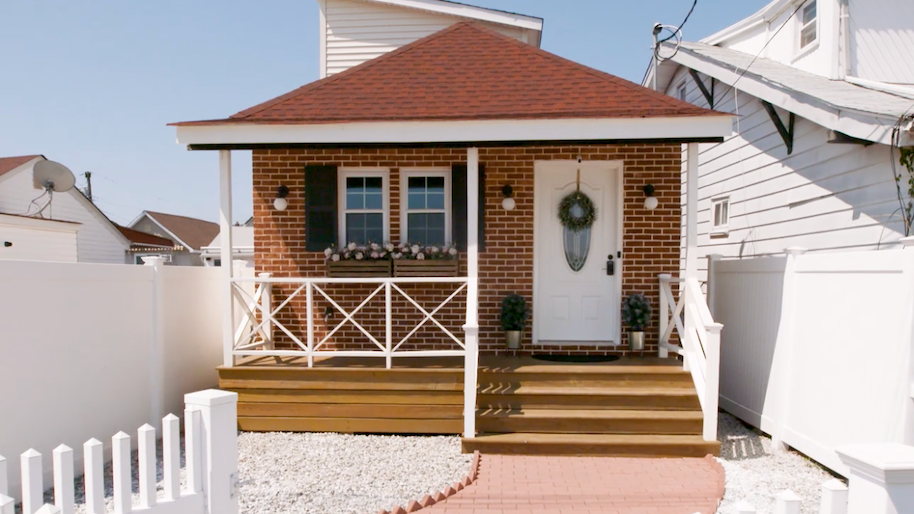1
Kudzu
 undefined undefined//Getty Images
undefined undefined//Getty Images
One plant every prospective homeowner should be wary of is Kudzu. “The most aggressive weed on the planet is Kudzu,” says Tammy Sons, founder and CEO of TN Nursery in Tennessee. “It grows up to 18″ per day. You need professional help getting rid of it. This is a deal breaker for knowledgable homeowners.”
2
Running Bamboo
 DigiPub//Getty Images
DigiPub//Getty Images
People love bamboo for it’s height and ability to fill in bare spots in a properties landscape, but it is invasive and difficult to control. “Running bamboo can spread aggressively, potentially causing damage to the landscape and nearby structures,” says Bret Douglas, a member of the Thumbtack Pro Advisory Board and owner of Ironclad Landscape Management. “Opting for clumping bamboo makes it easier to maintain and provides a similar aesthetic without the invasive growth. For an attractive, manageable alternative, consider plants like star jasmine or mandevilla, which offer beauty without the risk of overtaking your yard.”
Advertisement – Continue Reading Below
3
Japanese Knotweed
 Ali Majdfar//Getty Images
Ali Majdfar//Getty Images
Not only can Japanese Knotweed wreak havoc on your garden, but it can also be extremely difficult to fully eradicate. “Japanese Knotweed is another invasive species that can outcompete other plants, killing the rest of your garden. If that alone doesn’t scare you, these plants are known to be harder to remove than other invasive species,” says Matt Slaymaker, Product Manager with Lively Root. “This plant has underground root storages called rhizomes that, if missed when removing, can remain in the soil and continue to grow, requiring a second removal process (not to mention possibly even a third or fourth).”
4
Bermuda Grass
 Tatyana Consaul//Getty Images
Tatyana Consaul//Getty Images
Bermuda grass has often been used as turf grass in warmer climates, explains Scott Seargeant, International Consulting Arborist and owner of Seargeant Landscape & Arboriculture, but that’s a mistake. “It is extremely invasive and must have a border around it to keep it in check. And it often breaches its borders,” he says. “It must be mowed weekly to keep the seed from producing and blowing into your flowerbeds. Most eradication is with systemic herbicides.”
Advertisement – Continue Reading Below
5
Mint
 Jacques Julien//Getty Images
Jacques Julien//Getty Images
This one’s a bit of a heartbreaker: This fragrant (and delicious) herb may be wonderful in recipes and drinks, but it can quickly become a pain to manage. “Mint is a great herb to grow, but if you see some growing in the ground instead of in pots, run,” says Friedman. “This stuff spreads incredibly aggressively and will choke out the rest of your herb garden, not to mention your lawn if you let it.”
6
Sissoo Tree
 Subas chandra Mahato//Getty Images
Subas chandra Mahato//Getty Images
Sissoo trees look like Ficus trees with similar leaves and shapes, says Smith. “This tree grows incredibly fast, which means its roots grow incredibly fast. These roots tend to get under masonry and lift it right up.”
Advertisement – Continue Reading Below
7
Sweet Gum Tree
 Mimi Ditchie Photography//Getty Images
Mimi Ditchie Photography//Getty Images
The spiky seeds on sweet gum trees can be a hazard. “Sweet gum trees are beautiful and common in landscaping, but when it’s time for them to drop their seed balls, watch out,” says Slaymaker. “These seed bundles harden and become sharp objects that should be avoided by feet, bicycle tires, and your pup who loves to eat everything.”
8
English Ivy
 Grace Cary//Getty Images
Grace Cary//Getty Images
English Ivy can climb–which may cause serious problems in your yard. “English Ivy is often used in landscapes and gardens but can quickly spread and threaten everything around it,” says Slaymaker. “This plant, if not managed, can take over and kill many other plants, even large trees. The Virginia Creeper is a good option that can cover an area and climb trees without presenting a threat.”
Advertisement – Continue Reading Below
9
Chinese Elm Tree
 undefined undefined//Getty Images
undefined undefined//Getty Images
This scaly bark tree comes with potential root problems. “This tree grows fast, and the roots grow strong,” says Smith. “You can cut this tree down and the roots will keep growing around your house for years.”
10
Blue Cape Plumbago
 ioanna_alexa//Getty Images
ioanna_alexa//Getty Images
While the Blue Cape Plumago adds a pop of vibrant blue to any garden, it can grow exponentially. “Be cautious when using large-scale plants like Blue Cape Plumbago, which can grow up to 10 feet by 10 feet,” says Douglas. “For a similar color but more manageable size, consider using a smaller alternative, such as Blue Daze. This compact plant serves as a lower-growing ground cover.”
Advertisement – Continue Reading Below
11
Ash Tree
 Steve Austin//Getty Images
Steve Austin//Getty Images
Ash trees grow tall and create a lovely canopy, but they also have lots of issues. “These were a popular choice to plant several decades ago, but they’re quickly being killed off across much of the United States by the emerald ash borer, an invasive beetle,” says Friedman. “Especially if you live east of the Mississippi, buying a house with an ash tree means buying a call to an arborist to take it down sometime soon.”
12
Mexican Primrose
 joerglondong / 500px//Getty Images
joerglondong / 500px//Getty Images
The pink petals of this plant’s flower will add a pop of color, but they may drown out other plants. “Don’t plant it unless you want only primrose in your garden,” says Smith. “This plant has lovely flowers but will take over every inch of your garden. You can plant Lantana or a Verbena plant instead.”
Advertisement – Continue Reading Below
13
Lillies
 SHSPhotography//Getty Images
SHSPhotography//Getty Images
While lilies produce the most gorgeous blooms, they are also toxic. “Lilies are beautiful and easy to grow, but they can be dangerous to pets, especially cats,” says Friedman. “If you have outside pets, you’ll want to avoid homes with lilies or pull them after you move in.”
14
Eastern Black Walnut Tree
 DonNichols//Getty Images
DonNichols//Getty Images
This tree may produce delicious walnuts, but may also come with lots of headaches. “Eastern Black Walnut Tree is a beautiful shade tree with a very unique dark side–its root system produces a natural herbicide that hinders the growth of other plants surrounding it,” says Slaymaker. “Their roots can even grow outwards to 50 feet, causing a large area of unplantable space.”
Advertisement – Continue Reading Below
15
Mexican Feather Grass
 SergioProvilskyi//Getty Images
SergioProvilskyi//Getty Images
This wispy plant grows quickly, but it can also irritate your skin. “Mexican feather grass is a popular drought-tolerant grass used in many landscapes today. It spreads rather quickly and also can cause mild itchy dermatitis if rubbed up against,” says Sergeant.
Advertisement – Continue Reading Below
Advertisement – Continue Reading Below
Advertisement – Continue Reading Below



